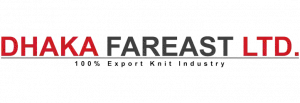Workwear includes clothing for various jobs and work settings. It ranges from business suits to specialized uniforms. Each type has a specific purpose and meets job needs.
Traditional Business Attire
Traditional business attire, also known as corporate or formal wear, is professional and conservative. It is common in offices, law firms, and banks.
- Men’s Attire: Men wear tailored suits in classic colors like black, navy, or gray. They pair these with button-down shirts, silk ties, leather shoes, belts, and cufflinks.
- Women’s Attire: Women wear tailored blazers, skirts, or trousers in neutral colors. They match these with blouses, shirts, or dresses. Accessories include pumps, pearls, and structured handbags.
Smart Casual Attire
Smart casual attire blends formal and casual styles. It’s perfect for creative industries, startups, and casual offices. For men, it often includes trousers or chinos with a button-down or polo shirt. They can add a blazer or sweater. Shoe choices range from loafers to sneakers. Women can wear trousers, skirts, or dresses with blouses or knit tops. They can also add cardigans, blazers, or denim jackets. For shoes, flats, loafers, or ankle boots are good options.
Business Casual Attire
Business casual is a relaxed, yet professional dress code for laid-back workplaces. You can express yourself freely while looking polished. For men, it’s about shirts with khakis or dress pants, topped with a blazer or sport coat. Ties are optional. They can wear dress shoes, loafers, or dressy sneakers. Women can choose blouses, sweaters, or knit tops with tailored trousers, skirts, or dresses with modest hemlines. They can add a cardigan, blazer, or vest and wear flats, pumps, or dressy sandals.
Uniforms and Workwear
Some jobs need specific uniforms or work clothes for tasks, safety, or standards. For example, healthcare, hospitality, construction, and manufacturing often use these. Here are a few examples:
- Medical Scrubs: Doctors, nurses, and staff in hospitals and clinics wear these. They’re comfy, easy to clean, and help with hygiene.
- Hospitality Uniforms: Hotels and restaurants use these for their staff. They match the brand and are both comfy and practical.
- Safety Gear and Protective Clothing: Industries like construction and manufacturing require these. Items include hard hats, high-visibility vests, safety boots, and flame-resistant clothing. They keep workers safe and meet safety rules.
Casual Fridays Attire
Casual Fridays, or dress-down Fridays, let employees dress casually while staying professional. Men can wear polo shirts, casual button-downs, or knit tops with chinos, jeans, or khakis. They can choose from loafers or casual sneakers. Women can wear casual tops, blouses, or sweaters with jeans, trousers, or skirts in denim or relaxed fabrics. Their options include flats, sandals, or stylish sneakers.
Outdoor Workwear and Functional Clothing
Outdoor workwear and functional clothing suit those who work outside or in tough areas. They aim for durability, comfort, and protection. Here are two common types:
- Outdoor Apparel: This includes jackets, vests, and pants. They use materials like Gore-Tex or waterproof fabrics. These materials resist harsh conditions. They also offer breathability and freedom of movement.
- High-Visibility Clothing: This clothing is vital in construction, roadwork, and high-risk settings. It stands out with its bright colors and reflective strips. These features boost visibility and safety in low light.
Customized and Branded Workwear
Some organizations choose custom or branded work clothes for three reasons. First, they aim to boost their corporate identity. Second, they hope to increase brand awareness. Third, they want to create a unified team look. These clothes often include company logos, colors, and branding elements. Thus, they reflect the organization’s values and image.
Dressing for Success in Every Setting
Workwear covers outfits for various jobs and settings. This includes formal attire for offices and casual wear for creative environments. It also involves uniforms for specific tasks. Wearing the right outfit is key. It shows professionalism, confidence, and skill. Understanding workwear is crucial. It helps people make a good impression and succeed at work.

